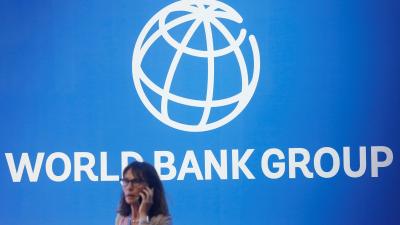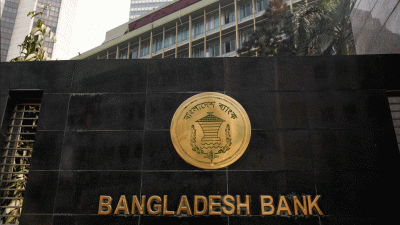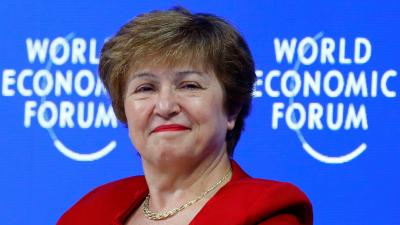 The minimum export price (MEP) of onions was recently withdrawn by the Indian government. The decision, which came into effect on February 3, was made by National Agricultural Cooperative Marketing Federation of India Ltd (NAFED), the top organization of marketing cooperatives for agricultural produce in India.
The minimum export price (MEP) of onions was recently withdrawn by the Indian government. The decision, which came into effect on February 3, was made by National Agricultural Cooperative Marketing Federation of India Ltd (NAFED), the top organization of marketing cooperatives for agricultural produce in India.
Even though onion prices have already dropped in India but Bangladeshi markets is yet to get the benefit of this MEP withdrawal.
Responding to a query, Atiqul Rahman, a wholesaler based in Dhaka’s Kawran Bazar told Bangla Tribune, “When the Indian government increases the minimum export prices of onions in India, prices increased in Bangladeshi markets.”
“However, India recently decreased the MEP, and later completely removed it. But, the local markets are yet to reap the benefits of the decision.”
Visiting a number of local retail markets in the capital, it is found that the local onions are being sold at a price of Tk60 to Tk65 Kg, and imported onions are being sold at Tk55 to Tk60 per Kg.
The traders defended their price by saying that the onions that are currently being sold were bought at a high price and the new imports of onions are yet to arrive in the markets.
Just a few weeks ago, the local onions were priced at around Tk130 per Kg, and onions imported from India were available at Tk110.
Compared to January 2017, the price of onions has increased by at least Tk20 to Tk25 in January this year.
Last season, the production of onions in India went down due to a severe drought, which in turn increased the prices both in India and in Bangladesh. The prices saw yet another increase after torrential rain caused floods in several states of India last year, further pushing the onion price to Tk120-130 per Kg in most markets throughout Bangladesh.
The prices saw yet another increase after torrential rain caused floods in several states of India last year, further pushing the onion price to Tk120-130 per Kg in most markets throughout Bangladesh.
It is learned that the price of onions reached $850 in India in the past two months. But, from January 20 this year, the price came down to $700.
In the latest development on February 1, the Indian government completely removed the minimum export price (MEP) on onions.
On February 2, directives regarding the removal of MEP arrived at the Hili customs station, effectively withdrawing the requirement of minimum export prices, and it came into effect on February 3, 2018. The customs server has also been updated with accordingly.
Sources from the Hili customs station have confirmed the matter to the Bangla Tribune.
It is also learned that two of India’s largest marketplaces named Lasalgaon Onion Market and Kashik Onion Market, had witnessed a major drop in onion prices only a few months ago.
In August 2017, per one hundred kgs of onions were priced at 2,600 Rupees, but the price came crashing to 900 Rupees in September the same year.
Other marketplaces in India also witnessed the same trend of onion price drop. But the onion prices in Bangladesh are not reflecting the major price cut in India. Compared to major marketplaces, the onions prices are even higher in markets littered around the different neighbourhood in Dhaka, frequently reaching Tk65 per Kg.
The Trading Corporation of Bangladesh (TCB), however, claimed in a recent statement that the price of onions has gone down by Tk10 since the last week.
To counter the price hike of onions in the Indian market during July 2017, a decision was taken to import onions from Egypt.
Commenting on the matter, Commerce Minister Tofail Ahmed at the parliament recently said, “No syndicates interfered with the production, import, distribution and caused the skyrocketing prices of onions. Bangladesh’s primary source of onion import is India.”
He pointed out that the floods in Uttar Pradesh and Maharashtra last year had damaged onion production there, causing the MEP to hit $850.
“The high import cost affected the local markets of Bangladesh but onion price is starting to drop, and it will drop further soon,” Tofail said.
According to the sources from the Commerce Ministry, Bangladesh has an annual demand of 2,200,000 to 2,500,000 metric tons of onions. Last season, the country produced 1,750,000 metric tons of onions, while the deficit of around 700,000 metric tons is usually covered through imports.
 Business
Business
41298 hour(s) 43 minute(s) ago ;
Afternoon 01:37 ; Thursday ; Jul 03, 2025
Onion price decreased in India, when will Bangladesh get its benefit?
Send
Shafiqul Islam
Published : 19:58, Feb 07, 2018 | Updated : 20:00, Feb 07, 2018
Published : 19:58, Feb 07, 2018 | Updated : 20:00, Feb 07, 2018
0 ...0 ...
/MNH/PDN/
Topics: Top Stories
- KOICA donates medical supplies to BSMMU
- 5 more flights to take back British nationals to London
- Covid19: Rajarbagh, Mohammadpur worst affected
- Momen joins UN solidarity song over COVID-19 combat
- Covid-19: OIC to hold special meeting
- WFP begins food distribution in Cox’s Bazar
- WFP begins food distribution in Cox’s Bazar
- 290 return home to Australia
- Third charter flight for US citizens to return home
- Dhaka proposes to postpone D8 Summit
Unauthorized use of news, image, information, etc published by Bangla Tribune is punishable by copyright law. Appropriate legal steps will be taken by the management against any person or body that infringes those laws.
Bangla Tribune is one of the most revered online newspapers in Bangladesh, due to its reputation of neutral coverage and incisive analysis.
F R Tower, 8/C Panthapath, Shukrabad, Dhaka-1207 | Phone: 58151324; 58151326, Fax: 58151329 | Mob: 01730794527, 01730794528






